Natural Histories
The artwork that comprises Natural Histories focuses on impressions made onto and by our bodies. The title arises from much of the inspiration behind this body of work from visiting natural history museums and considering human evolution, what makes homo sapiens distinct in our thinking, societal interactions, and making, fossils and the detritus cultures leave behind as well as our ways of recording history.
40 Scrolls
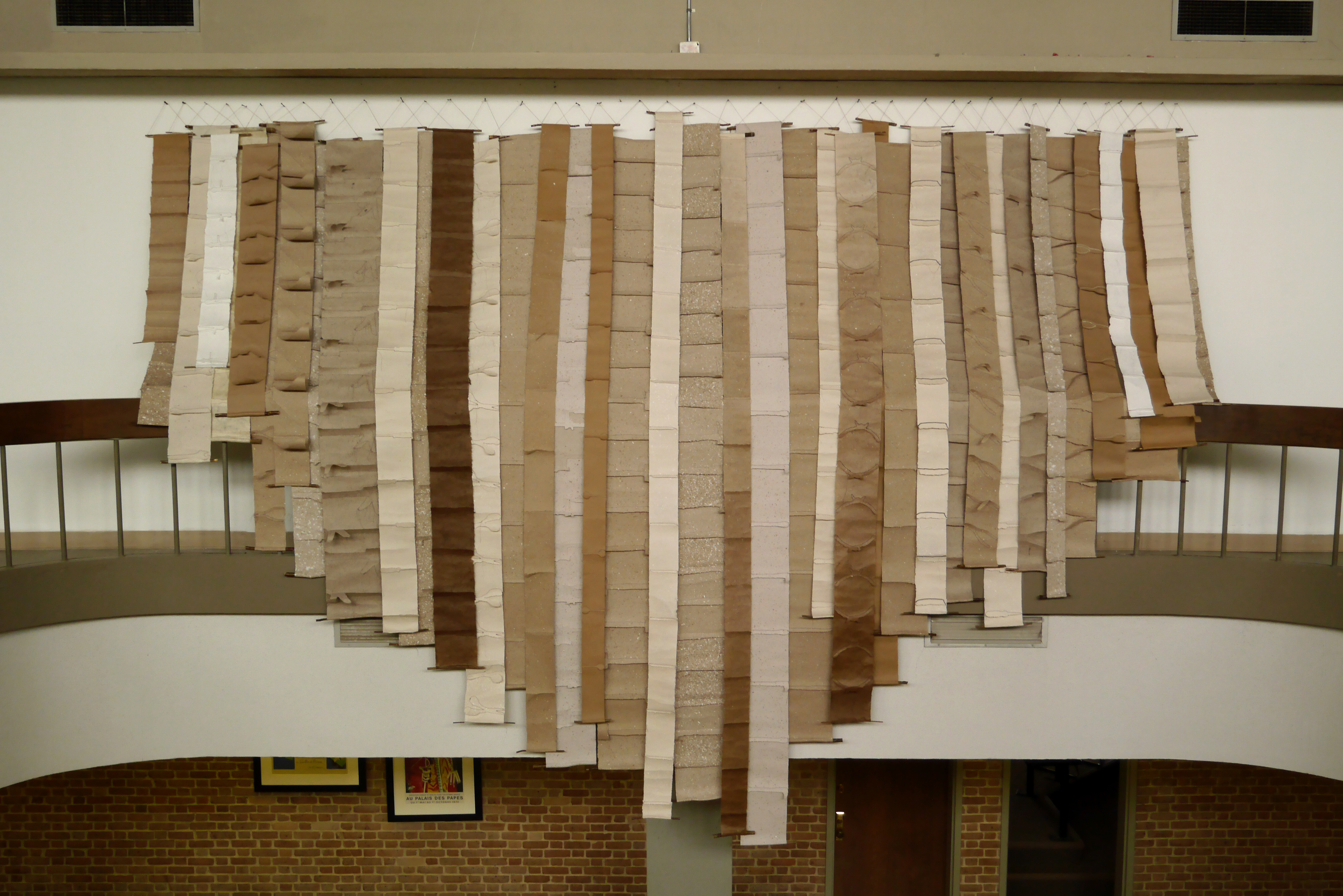
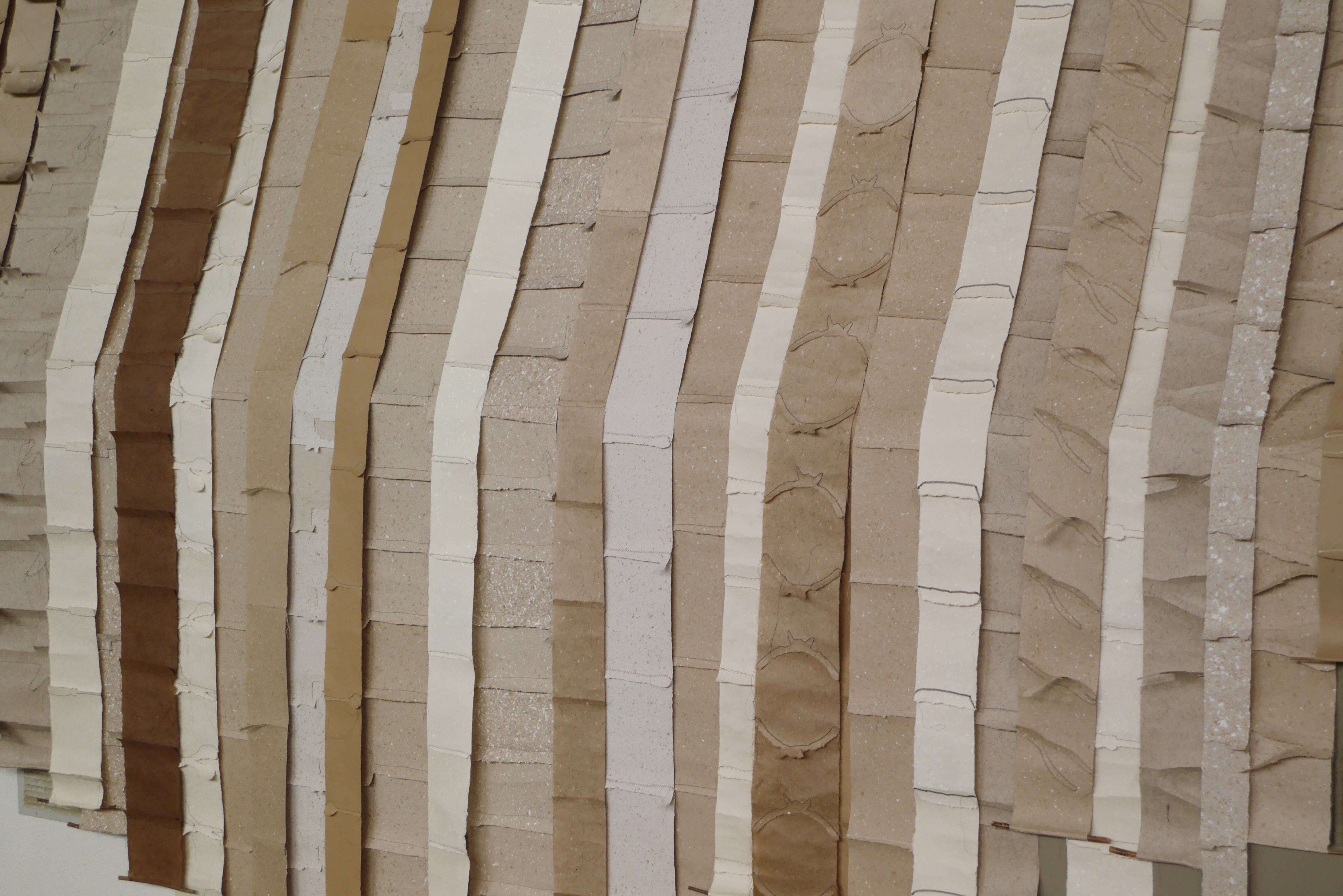
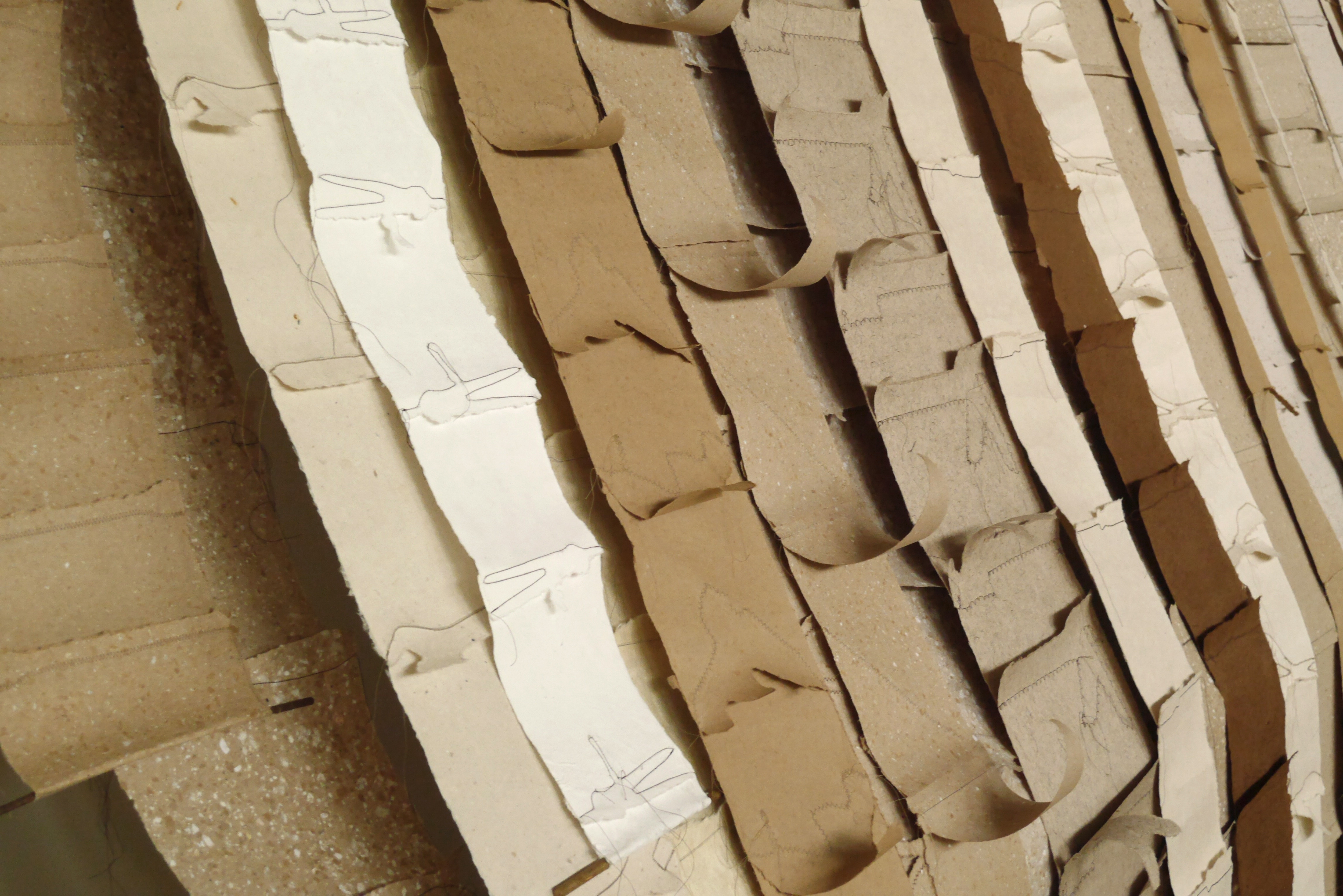

~20'x16'x2', handmade paper, thread, twigs, twine, glue, 2016
40 Scrolls showcases a year of experimentation in the papermaking studio during which I created handmade paper from a variety of fibers including cardboard, shredded Millsaps business office paper, congressional records, abaca, kozo, cotton, and cedar. I was inspired by a cross-cultural exchange trip to Shanghai, China, and the ubiquitous use of scrolls as a display for ink paintings as well as referencing another ancient unbound book form. I chose to highlight contemporary hand tools, a symbol of our evolution to upright Homo sapiens. The first tool used is theorized to be sharpened stones, made 2.5 million years ago. As humans evolved, our tools evolved into the mass-market tools available today. Having the right tool can make your project easier by tenfold. I drew the silhouette of each tool shown pillaged mostly from my toolbox onto a piece of ¼ inch luon and cut the silhouette out using a band saw. I then used the tool-houette to rip each piece of paper into the tool’s outlines and sewed the lengths of paper along the opposite side using a sewing machine. Collectively, they can be read as a representation of our evolution into the creatures we are today, a direct result of the first human to pick up a rock and use it as a tool for hunting, processing animals, and having the power to influence their environment.20 (of a projected 40) Wreaths




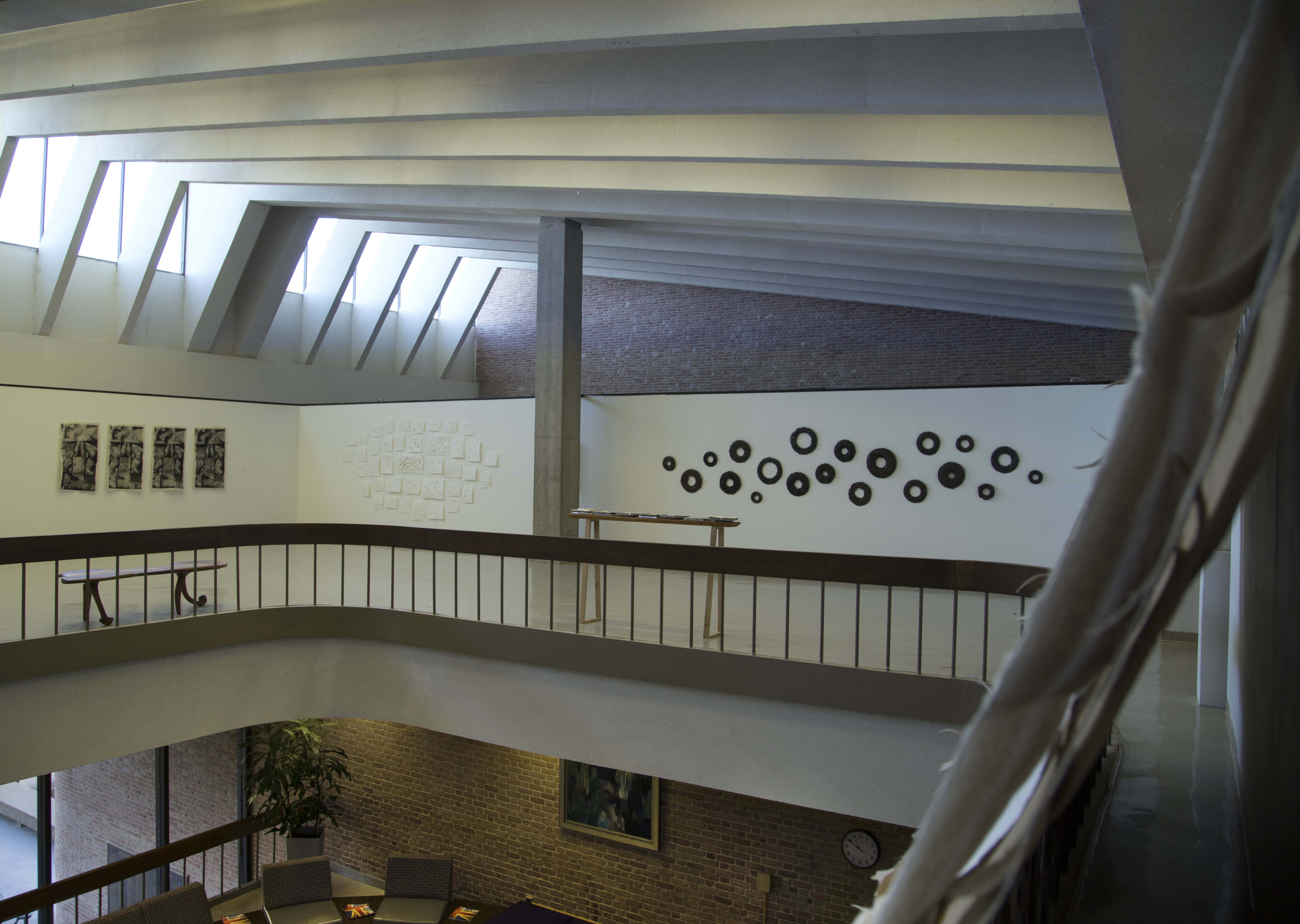
Wreaths range from 7"-16" circumferences, cast iron, 2015
I created 20 (of a projected 40) Wreaths at Sculpture Trails Outdoor Museum in Solsberry, Indiana. My interest in the form began from visiting Latvia, as a response to their midsummer wreath making. This tradition is rooted in yearly pagan celebrations of Ligo and Jani, a summer solstice holiday. Men weave wreaths of oak leaves while women create wreaths of wildflowers and assorted greenery.Wreaths range from 7"-16" circumferences
Cast iron
2015 I use the form of a wreath to relate to the tradition of creating wreaths as decoration, normally unpaid women’s work that beautifies her environment. 20 Wreaths use texture as a way of displaying the impression of fossils our society is currently making. I used an organic and inorganic texture on each wreath: bubble wrap and wheat, sequined fabric and acorn caps, smartphones and ferns, aluminum foil and concentric spiral shells to visualize in iron our beautiful waste.Wreath Books
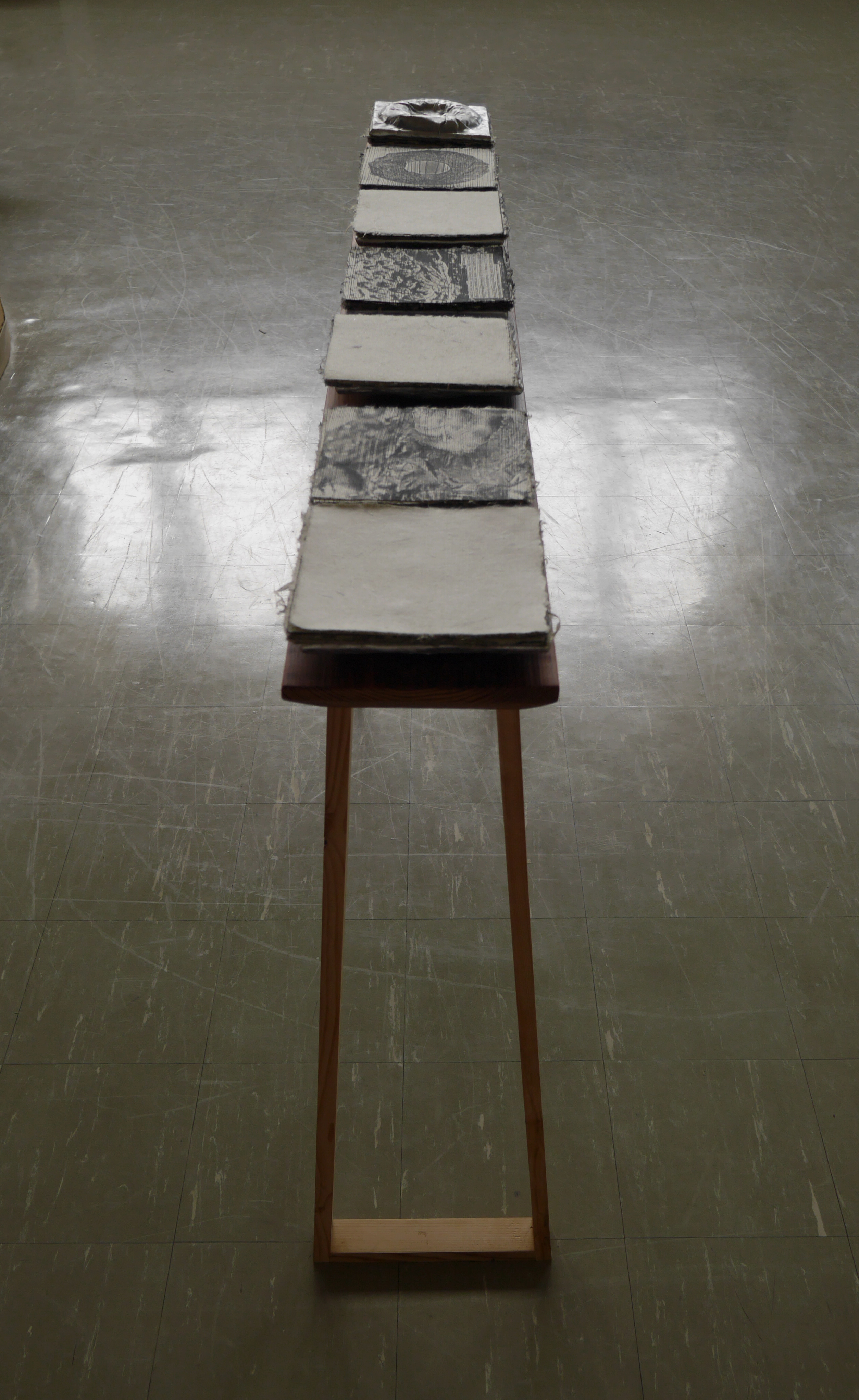
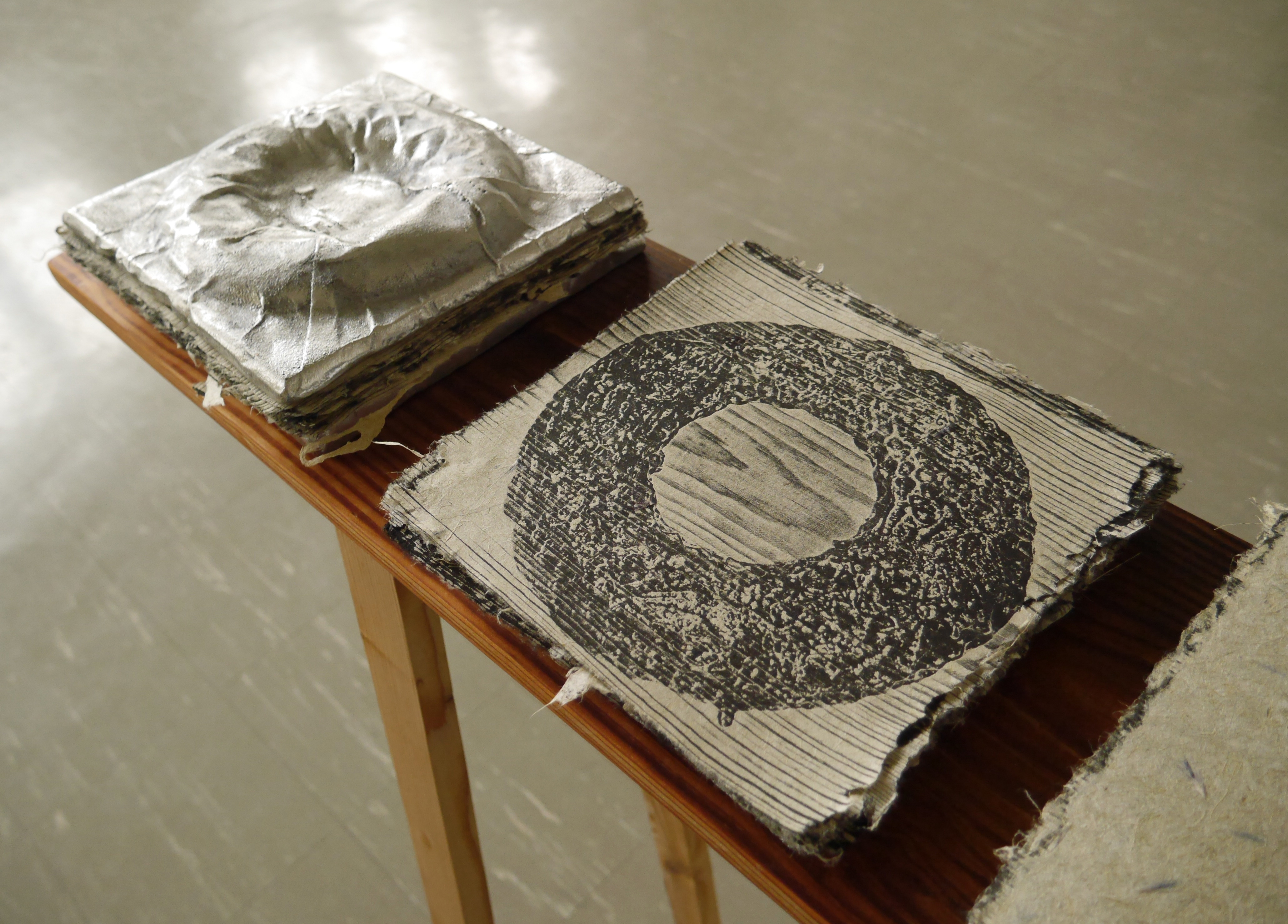



Each book is 8"x8"x3", Laser etched woodblock prints on handmade abaca grass paper with cast aluminum covers, 2015-2016
Wreath Books began soon after finishing the twenty wreaths in this exhibition. First, I edited photos of each wreath and cast the covers in aluminum. Due to my fascination with the wreath form, I looked for comprehensive scholarly texts about the practices of wreath making, but only found references and shorter articles. I waded through some of those articles and selected sections of text to edit into the detail images in Photoshop.Each book is 8"x8"x3"
Laser etched woodblock prints on handmade abaca grass paper with cast aluminum covers
2015-2016 The books are a compilation of texture, paper, research, and information. I continue to be surprised at the breadth of wreath making found throughout history. I made the paper from purple fountain grass grown in my Fondren backyard mixed with abaca along with grass seeds added into the vat during the papermaking process. I etched each image in negative onto a piece of pine wood with our laser printer and printed the book in the print shop. The books are unbound due to the need to add images of more wreaths and more research as I continue with the series of castings on a larger scale. Ancient book forms did not used to be bound, some books were written on palm leaves and the covers created from wood. Some of these stacked unbound books have accompanying boxes created to protect the precious knowledge and histories contained inside. The Wreath Books will continue to grow alongside the wreath sculptures and research.Cockroach Homes




~14'x7'x1-2", cast cotton paper, gold leaf, etymology pins, 2016
In Cockroach Homes, I cast cotton paper sheets onto cardboard forms to create a series of cockroach-infested houses. The cockroaches converge on the White House in the middle of the arrangement with a concurrent accumulation of gold leaf. I created this work during and after the most recent presidential election. A cockroach is an intriguing symbol of survival; folklore assures us that roaches will be some of the few living creatures to outlive a nuclear holocaust. Our country has been infested by dreams of wealth, ideations of the rich, and false hopes spoken by a false prophet. The golden cockroaches will pillage this earth and outlive us all.Electoral District Prints



Each print is 3'x4', Laser etched woodblock prints, thread, glue, T-pins, 2016
In Electoral District Prints (2016), I took scans of my body and etched those images onto woodblocks using a laser. I then printed them in a grid on four different sheets of paper, two of my handmade kozo sheets and two on Chinese rice paper. I then projected a map of my Mississippi State Congressional voting district onto the prints and traced the different districts onto the paper. I ripped each print along the district lines and sewed them back together with visible black thread, akin to that used to stitch wounds. The resulting image represents the body politic as it directly relates to my body and existence. Living in a conservative state where politicians are removed from the needs of their constituents directly inspired this work. Often, government policies function negatively for individuals’ free choice and the health of our bodies.